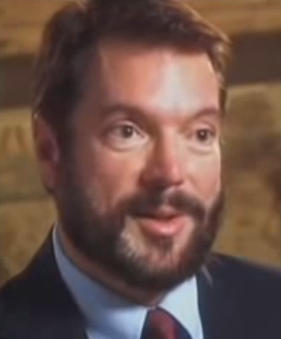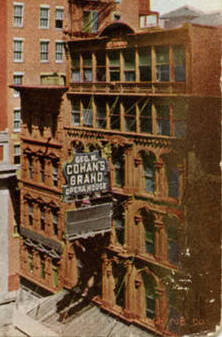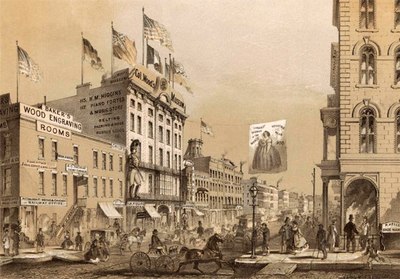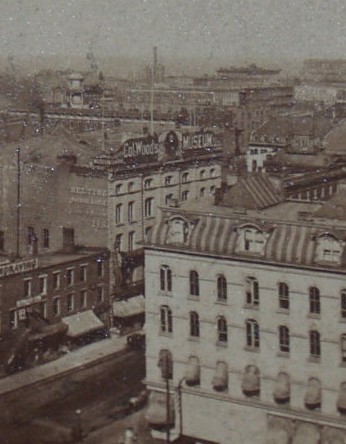
Louis Henry Sullivan was an American architect, and has been called a "father of skyscrapers" and "father of modernism." He was an influential architect of the Chicago School, a mentor to Frank Lloyd Wright, and an inspiration to the Chicago group of architects who have come to be known as the Prairie School. Along with Wright and Henry Hobson Richardson, Sullivan is one of "the recognized trinity of American architecture." The phrase "form follows function" is attributed to him, although the idea was theorised by Viollet le Duc who considered that structure and function in architecture should be the sole determinants of form. In 1944, Sullivan was the second architect to posthumously receive the AIA Gold Medal.

The Museum of Egyptian Antiquities, commonly known as the Egyptian Museum, located in Cairo, Egypt, houses the largest collection of Egyptian antiquities in the world. It houses over 120,000 items, with a representative amount on display. Located in Tahrir Square in a building built in 1901, it is the largest museum in Africa. Among its masterpieces are Pharaoh Tutankhamun's treasure, including its iconic gold burial mask, widely considered one of the best-known works of art in the world and a prominent symbol of ancient Egypt.

The Ebers Papyrus, also known as Papyrus Ebers, is an Egyptian medical papyrus of herbal knowledge dating to c. 1550 BCE. Among the oldest and most important medical papyri of Ancient Egypt, it was purchased at Luxor in the winter of 1873–1874 by the German Egyptologist Georg Ebers. It is currently kept at the Leipzig University Library in Germany.

The Book of Abraham is a collection of writings from several Egyptian scrolls discovered in the early 19th century during an archeological expedition by Antonio Lebolo. Members of the Church of Jesus Christ of Latter-day Saints purchased the scrolls from a traveling mummy exhibition on July 3, 1835, to be translated into English by Joseph Smith. According to Smith, the book was "a translation of some ancient records... purporting to be the writings of Abraham, while he was in Egypt, called the Book of Abraham, written by his own hand, upon papyrus". Smith said the papyri described Abraham's early life, his travels to Canaan and Egypt, and his vision of the cosmos and its creation.

Ford's Theatre is a theater located in Washington, D.C., which opened in 1863. The theater is best known for being the site of the assassination of Abraham Lincoln. On the night of April 14, 1865, John Wilkes Booth entered the theater box where Lincoln was watching a performance of Tom Taylor's play Our American Cousin, slipped the single-shot, 5.87-inch derringer from his pocket and fired at Lincoln's head. After being shot, the fatally wounded Lincoln was carried across the street to the nearby Petersen House, where he died the next morning.

The Pearl of Great Price is part of the canonical Standard Works of the Church of Jesus Christ of Latter-day Saints and some other Latter Day Saint denominations.

The Joseph Smith Papyri (JSP) are Egyptian funerary papyrus fragments from ancient Thebes dated between 300 and 100 BC which, along with four mummies, were once owned by Joseph Smith, the founder of the Latter Day Saint movement. Smith purchased the mummies and papyrus documents from a traveling exhibitor in Kirtland, Ohio in 1835. Smith said that the papyrus contained the records of the ancient patriarchs Abraham and Joseph.

The Great North Museum: Hancock is a museum of natural history and ancient civilisations in Newcastle upon Tyne, England.

Leeds City Museum, originally established in 1819, reopened in 2008 in Leeds, West Yorkshire, England. It is housed in the former Mechanics' Institute built by Cuthbert Brodrick, in Cookridge Street. It is one of nine sites in the Leeds Museums & Galleries group.

The Book of Abraham is a work produced between 1835 and 1842 by the Latter Day Saints (LDS) movement founder Joseph Smith that he said was based on Egyptian papyri purchased from a traveling mummy exhibition. According to Smith, the book was "a translation of some ancient records ... purporting to be the writings of Abraham, while he was in Egypt, called the Book of Abraham, written by his own hand, upon papyrus". The work was first published in 1842 and today is a canonical part of the Pearl of Great Price. Since its printing, the Book of Abraham has been a source of controversy. Numerous non-LDS Egyptologists, beginning in the mid-19th century, have heavily criticized Joseph Smith's translation and explanations of the facsimiles, unanimously concluding that his interpretations are inaccurate. They have also asserted that missing portions of the facsimiles were reconstructed incorrectly by Smith.

The Kirtland Egyptian papers (KEP) are a collection of documents related to the Book of Abraham created in Kirtland between July and November 1835, and Nauvoo between March through May 1842. Because some documents were created in Nauvoo, the collection is sometimes referred to as the Book of Abraham and Related Manuscripts and Joseph Smith Egyptian Papers.

The Joseph Smith Hypocephalus was a papyrus fragment, part of a larger collection of papyri known as the Joseph Smith Papyri, found in the Gurneh area of Thebes, Egypt, around the year 1818. The owner's name, Sheshonq, is written in the hieroglyphic text on the same hypocephalus. Multiple hypocephali in the British Museum are very similar to the Joseph Smith hypocephalus in layout and text, and were also uncovered in Thebes, Egypt. Other hypocephali also bear a strong resemblance.

The Joseph Smith Mansion House in Nauvoo, Illinois is a building constructed by Joseph Smith, the founder of the Latter Day Saint movement. Smith used the house as a personal home, a public boarding house, a hotel, and as a site for the performance of temple ordinances.

Robert Kriech Ritner was an American Egyptologist most recently at the Oriental Institute of the University of Chicago.

The Breathing Permit of Hôr or Hor Book of Breathing is a Ptolemaic era funerary text written for a Theban priest named Hôr. The breathing permit or Book of Breathing assisted its owner in navigating through the afterlife, being judged worthy and living forever.

The Book of Joseph is an untranslated text identified by Joseph Smith after analyzing Egyptian papyri that came into his possession in 1835. Joseph Smith taught that the text contains the writings of the ancient biblical patriarch Joseph. From the same papyri collection, Smith produced the first part of the Book of Abraham, but was killed before any known part of the Book of Joseph was translated.

Eyewitness accounts associated with the Joseph Smith Papyri have been analyzed extensively to understanding the content, purpose and meaning of the Book of Abraham, a canonized text of the Latter Day Saint movement. In 1835, Joseph Smith, founder of the Latter Day Saint movement, came into possession of four mummies, two papyrus rolls, and various papyrus fragments, which Smith said contained the writings of the ancient biblical patriarchs Abraham and Joseph.

The Apollo Theatre is an American theater in Belvidere, Illinois, built in 1921. The Apollo is a contributing property in downtown Belvidere's North State Street Historic District, on the north bank of the Kishwaukee River. On March 31, 2023, the Apollo's roof collapsed in the midst of a tornado outbreak, during a concert attended by 260 persons.

The Grand Opera House was a theatre located at 119 North Clark Street in Chicago, Illinois. Established by Chicago impresario John A. Hamlin, the theatre originally opened as the Coliseum in 1875 and was later rebranded as Hamlin's Theatre in 1878. Initially a disreputable variety theatre catering to lowbrow tastes, the theatre was completely reinvented after an extensive and expensive remodel and reconstruction led by architect Dankmar Adler. It reopened in 1880 as the Grand Opera House; now under the management of Harry L. Hamlin who ran the theatre for the next 32 years under that name. Under his tenure the venue became a respectable theatre which featured mainly performances of light operas and musical comedies; although some plays were also performed. In 1888 the well known painter and scenic designer Ernest Albert re-designed the interior of the opera house.

Edmund R. Krause was an architect in Chicago, Illinois. Krause was born in Thorn in the German Empire and moved to Chicago in 1885.





















